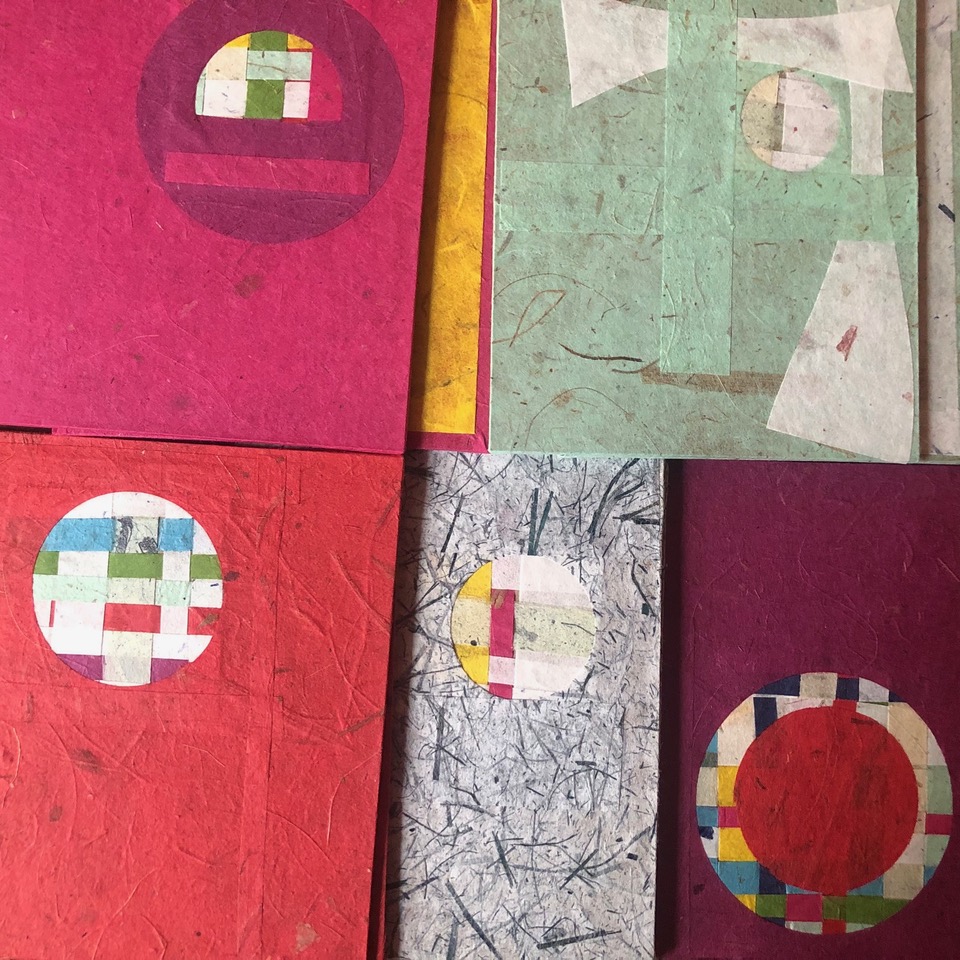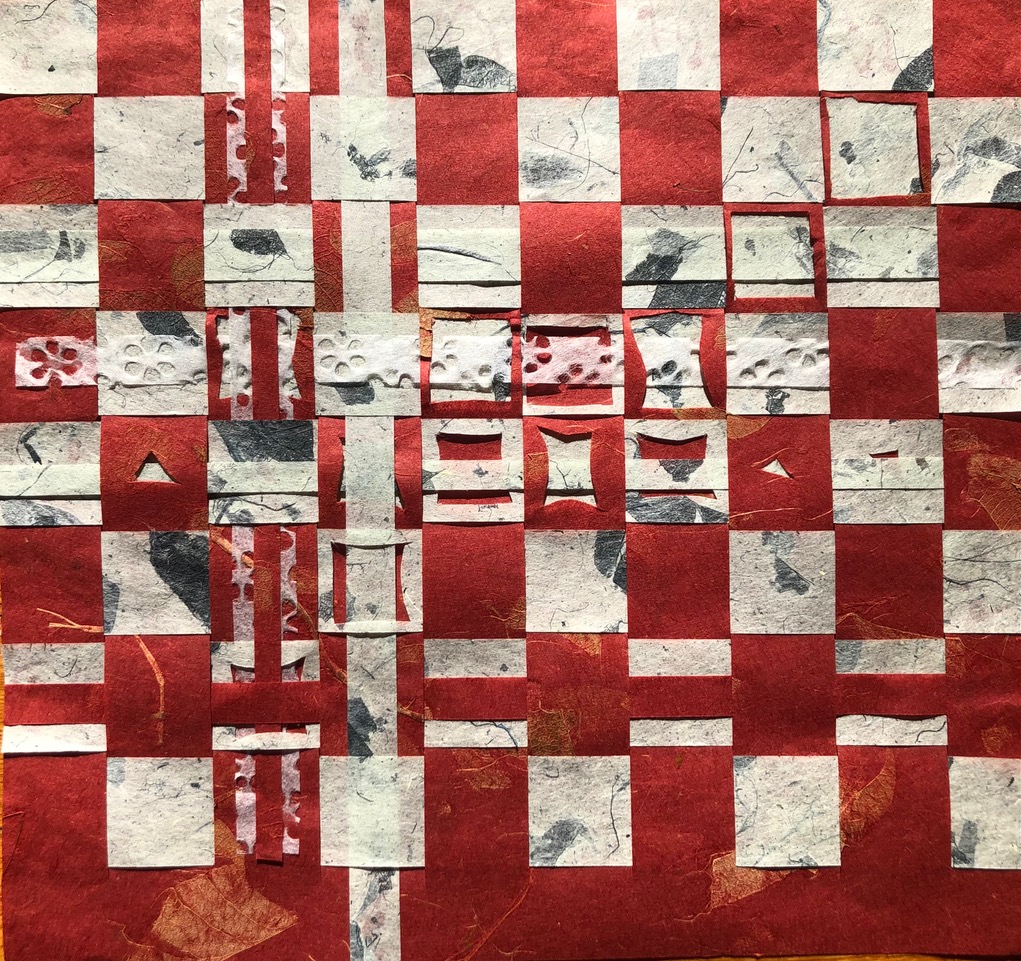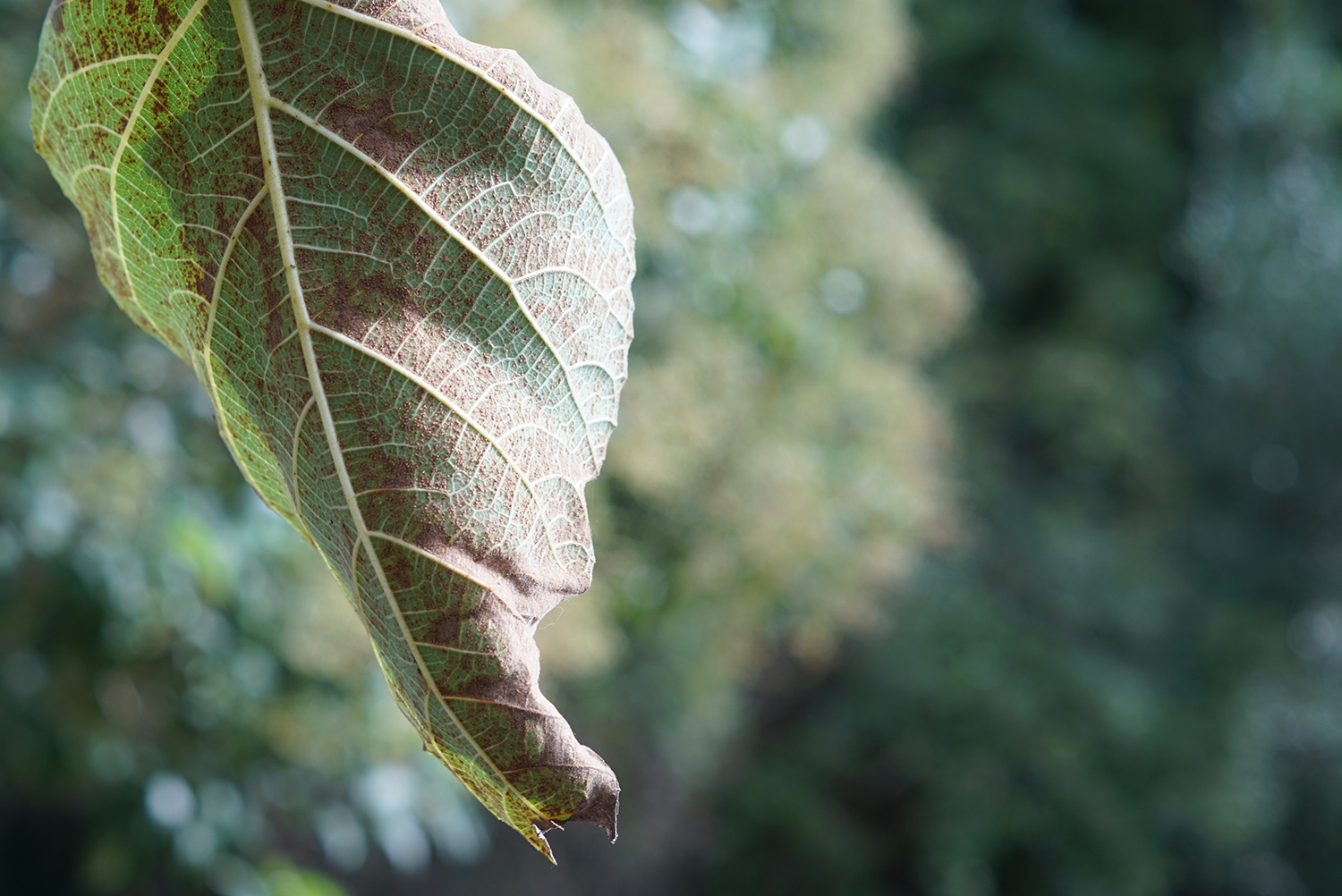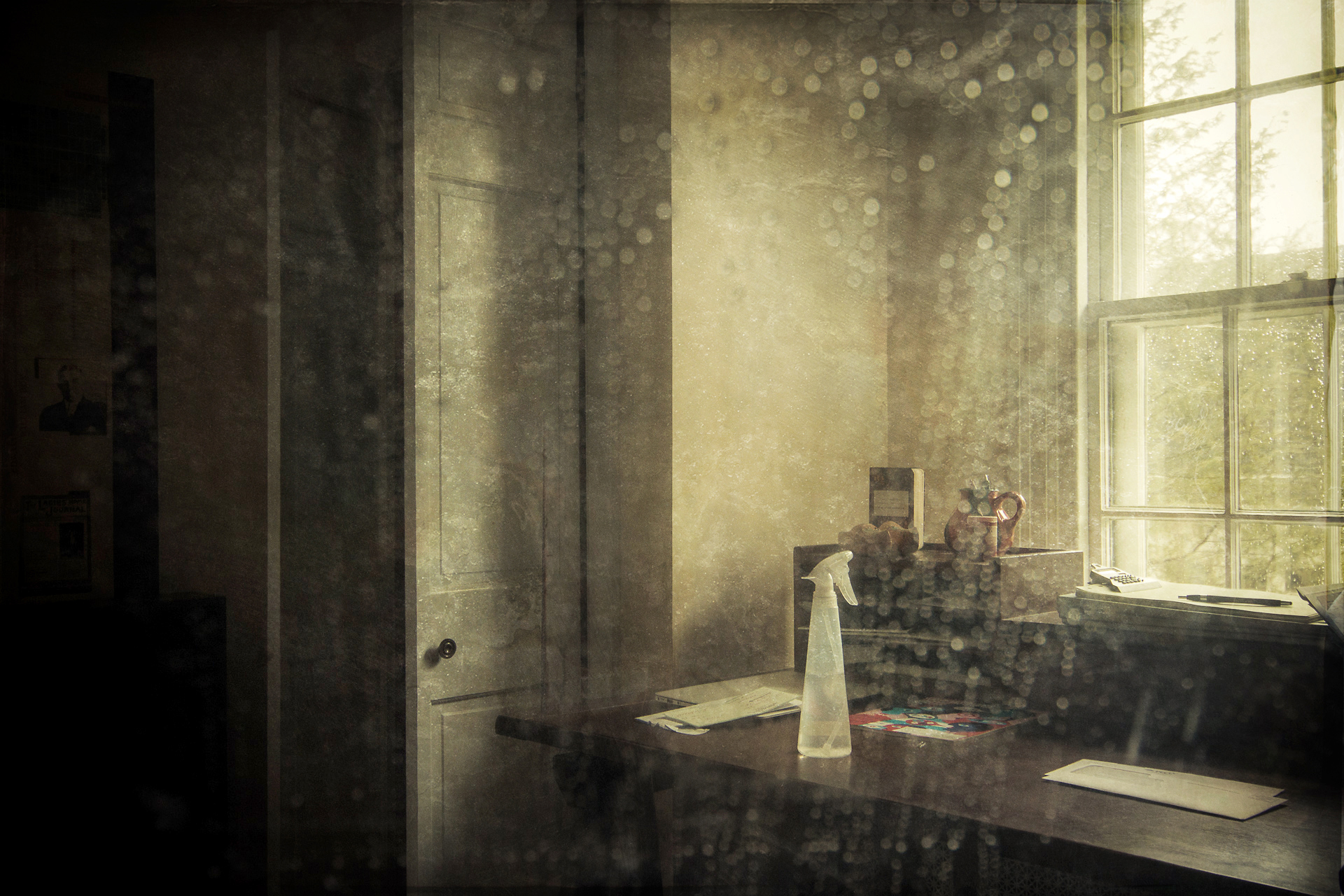
words: Beth Kephart
images: Beth Kephart
Thirty-five years ago, the job at the big-wow company down the road was mine. I’d made it through all the interview rounds. I’d impressed with my portfolio. I’d been given a tour, been shown where I’d sit, knew how much money I’d be making. I’d get a letter making it official in a couple of days, I’d been told, and in the intervening hours I should let other prospective hiring executives know that I’d been plucked from the employment marketplace.
That letter never came, of course. A few weeks later I got pregnant with my son.
We writers know the scenario well. Someone in power gives us a sign—an agent, perhaps, asking for an exclusive read of our newest pages and what we hear back is … nothing. Or the editor at a certain publishing house writes with enthusiasm, even winning charm, I’ll be in touch in the first week of January, and because we’ve dared to believe her, we wait an extra month to follow up only to met with … nothing. Or someone says I want you to give this keynote for me, or I want you on my panel, or I want you on my podcast, and we begin making our essential notes to self about what we’ll say, but really, as it turns out, we were not the one most wanted, we were but mere runners up, news we learn by hearing nothing at all, except for the ping of our unanswered emails.
They just lost our number, we try to tell ourselves—mis-sent their email, had an emergency. They are just in need of a better prod, we say, as the silence continues—a brief and tender, adorably self-mocking, de facto apologetic, surely subservient note that might just be the best follow-up note we ever wrote, except that it, too, will go unanswered.
A no we can take. A no is not confusing. A no is a decision made, it is nothing that’s left hanging. The silence is much harder.
Careless? Cavalier? It doesn’t really matter much in the wake of the Lit World’s Silent Treatment. Our hope starts to hurt. Our buoyancy leaks air. We doubt the work we dared to love, the stories we believed were important.
That son I had all those years ago was the best thing that could have ever happened—a gift in the wake of a most confusing disappointment, proof that the silencers do not have the final say. That son has his own business now, a boutique strategic advertising firm that would not exist were it not for those who say yes to him and actually mean it.
But what about all the others—the ones who say yes until they vanish? How, I asked him the other day, does he remain uplifted in the face of negation? How does he, day after day, extend his heart, extend his hand?
“You’re an upholder, Mom,” my son replied, citing Gretchen Rubin’s Four Tendencies. “You expect people to be like you—to follow through on what’s been promised. But I’m a questioner, and so I understand the questioner in others.” By which, my son means, that sometimes yes means maybe, and sometimes maybe means no, and how what takes place inside a moment might well be reconsidered later, and most likely will. How everything is fluid until it’s not, and how another’s silence is no reflection on us, no measure of our worth, no indication, in our case, of the value of our words, our truths, our stories.
My son is wise, and what he says is true, and we all need (ask Rubin) our questioners. But I am condemned, I suppose, to my upholding, to my basic wish for basic civility. I am condemned to wonder this: Even if silence is a symptom of our brisk and fleeting times—the easiest way out for agents of power, deciders of deals, and coordinators of keynotes—does such silence, in the end, advance the world in which we live?
I don’t believe it does.
But I close with this, for it also must be said: There are—I promise you, I promise us—still extraordinarily good, hugely talented, wondrously big-hearted, non-ghosting people in this publishing world. There are still agents who answer, editors who care, people who keep the promises they make. You can find their names in the backs of the books they’ve stewarded. You can find them extending a hand at conferences. You can find them in the mastheads of the publications you love most. You can find them behind the colophons they’ve crafted. Every time I grow disheartened (and oh, I do grow disheartened), someone proves me wrong. He answers my query. They want to talk about a piece. She invites me to sit in a room surrounded by books to imagine what a story might become.
Ghosters run rampant; they have their unsaid say. But there are also those who truly do love stories and respect the people who dare to write them. There are those who will answer your query—one way or the other. There are those who are still worth searching for. There are reasons, yet, to hope.
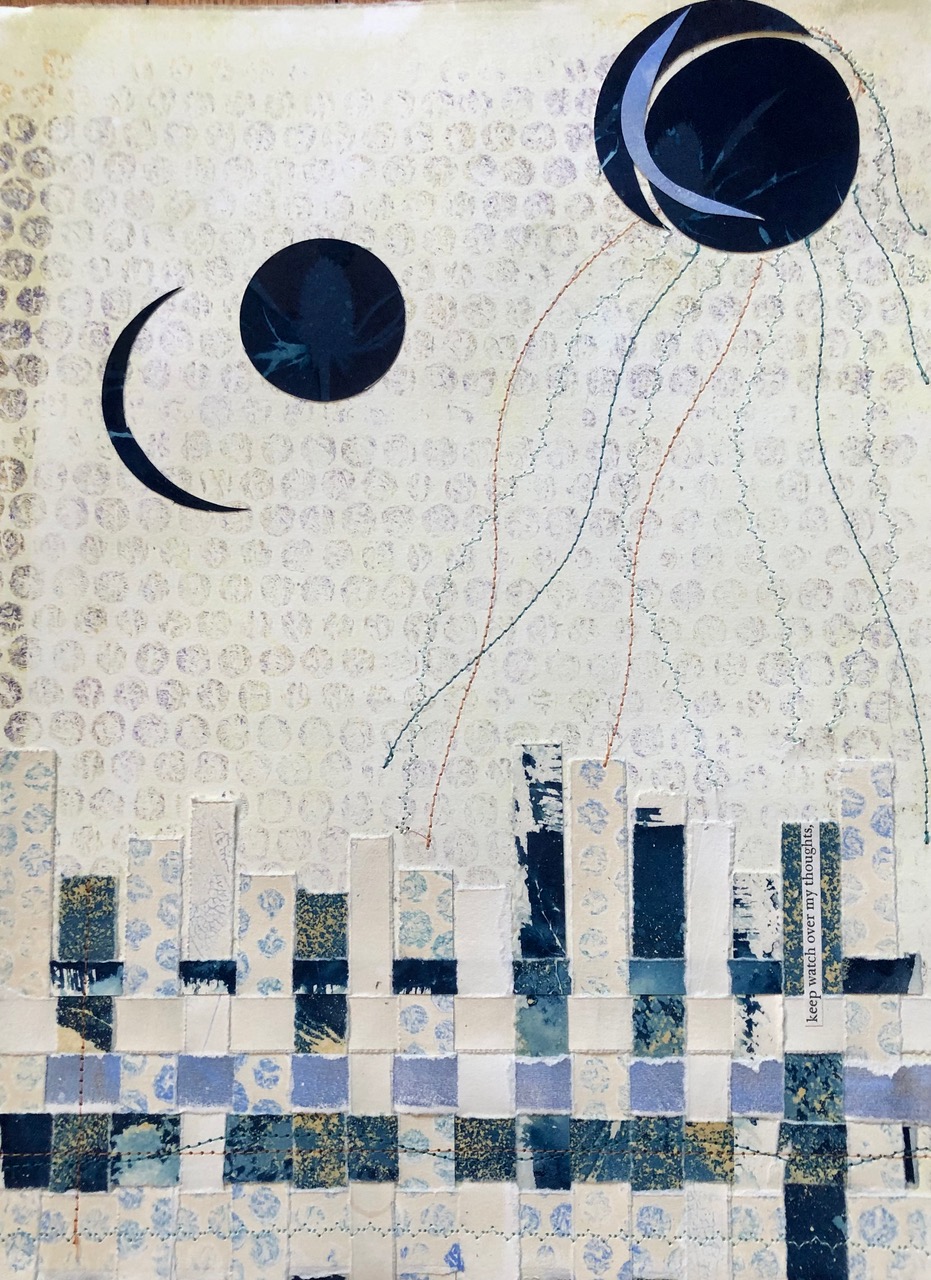
JUNCTURE NEWS
Recent publications and features
“Does It Have to be Memoir?” Brevity Blog, March 28, 2024
“A Paper Tale,” Omnia feature on My Life in Paper, March 26, 2024
“Three Squared: Book of Synonyms,” Cyanotype Art, Big Wing Review, March 15, 2024
“A Memory Palace of Paper,” The Boston Globe, March 12, 2024
Juncture Teaching News
Beth has a few open spots for one-on-one manuscript consulting. More about that here.
Beth will be giving a workshop on behalf of CRAFT TALKS entitled “Does It Have to Be Memoir? Reimagining Your True Story” on April 3. More information here.
Beth will be giving a full-day masterclass on behalf of CRAFT TALKS on the topic of character development on June 1. More information here.
Juncture Announces a Brand New Workshop Series
“Taking Flight” is a four-part workshop series designed for writers of nonfiction, fiction, and poetry seeking new ways to think about character, scene, story, plot, pace, and language itself. Participants will enter a curated world of art, music, and landscape, take a behind-the-scenes look at Beth’s approach to fitting words with images and ideas, and write to a progression of elevated, guided prompts. Selected responses will be shared and considered within the Zoom classroom.
Details
Saturday, September 28, 2024 3:00 – 4:30 ET (People)
Saturday, October 5, 2024 3:00 – 4:30 ET (Landscapes)
Sunday, October 13, 2024 3:00 – 4:30 ET (Plot and Pace)
Saturday, October 19, 2024 3:00 – 4:30 ET (Big Ideas)
Registration opens in April on the Juncture site.
Juncture Announces the Planned Launch of an Illustrated Essay Collection
Juncture will launch Beth’s first-ever essay collection, You Are Not Vanished Here, later this year. The collection showcases short-burst work as well as longer meditative pieces, all organized into six cohering sections with titles like “The Kingdom of Awe,” “Far Away, and Near,” and “Edge Life.” Each section will be prefaced by Bill’s original art.
Please keep an eye out for the upcoming cover reveal and a mid-summer launch date.
More Juncture News
We hope you’ll consider buying one of Juncture’s memoir craft books such as Tell the Truth: Make It Matter, We Are the Words: The Master Memoir Class, and Consequential Truths: On Writing the Lived Life, each of which looks at very different aspects of truth making in very different ways. All Juncture memoir-making books are supported by a wide range of other writers’ works.
Bind News:
We continue to evolve here at Bind—adding new items to our Etsy shop, preparing our schedule of farmers market and guild shows (we will soon have some exciting news to share in that regard), and exploring new means (sewing machines! a modest paper-weaving tool!) to produce new kinds of art. We are always grateful for your interest.
words: Beth Kephart, Cynthia Reeves
images: Beth Kephart, Cynthia Reeves
WEAVING FAMILY HISTORY INTO FICTION
In recent workshops and craft pieces, I’ve been exploring that intriguing netherland in writing—that place where personal stories inform the making of hybrid forms and fictions, on the one hand, and where the crafting of hybrids and fictions helps us better understand what might have been in the lives of those we’ve loved, on the other.
A perfect exemplar of that transmutation is the new book by Cynthia Reeves—Falling Through the New World (Gold Wake Press Collective). This is a collection of short stories written over a period of two decades. It’s fiction that emerges from Cyndi’s deep engagement with family history, global history, and generational trauma. I asked Cyndi to share a bit of her process with us at Juncture Notes. I was delighted when she said yes.
Note to readers: I’ll be giving a workshop on this very topic, “Does It Have to Be Memoir? Reimagining Your True Story,” on behalf of CRAFT TALKS on April 3. More information here. In addition, please take note of Juncture News, below, in which Bill and I are announcing a brand-new Juncture Workshops series, “Taking Flight,” for 2024.
Weaving Family History into Fiction
Cynthia Reeves
Imagine this: An Abruzzesi lacemaker pulls a cylindrical velvet pillow onto her lap, fastens the pricked pattern of a doily to the convex surface with hundreds of silver pins, secures dozens of bobbins wound with silken thread to the pins, and begins the intricate process of intertwining and plaiting the threads. It’s a delicate dance of weaving, accompanied by the music of clicking bobbins.
Twenty years ago, when I began to envision the scenes and characters of my newly released collection of short stories, Falling Through the New World, this image was the starting point for months of research into the craft of bobbin lace.
Why bobbin lace? I’d inherited several pieces of my maternal grandmother Anna’s handiwork—a bedspread and bureau scarf of rustic lace patterned with overlapping diamonds, and a white nightgown edged with gauzy scallops of eyelash Chantilly. The book was to be fiction, but its essence was to pay tribute to my Italian forebears—the virtuosity of their labor, their courage to leave the familiar for the new world, and their faith in the future. I saw bobbin lacemaking as a literal thread that would bind together the four generations inhabiting my book. But I also saw its potential as metaphor—many threads simultaneously in play, the fragility of lace, and patterns repeated or broken across generations.
Beyond exploiting bobbin lacemaking’s literary potential, I wished to honor my grandmother’s memory. It broke my heart that she came from a culture that valued lacemaking as art, whereas in America the craft was considered manual labor. Moreover, her arrival here in 1929 coincided with dwindling demand for lace as fashions became plainer, and the Depression all but eliminated the market for handmade lace. Even after months of delving into the art, however, I found it hard to depict the complicated weaving of wedding veils and dresses, antimacassars and tablecloths. It took months for me to feel confident enough to describe in the most rudimentary way the fictional Anna making a wedding veil in the story “La Mantiglia”:
I pick up a pair of bobbins and resume where I left off yesterday, twisting and crossing the bobbins, guiding them along the pins that outline the paper pattern underneath the lace. Row after row of stitches, repeating and repeating, create the delicate mesh of the wedding veil. A single bird with two heads facing away from each other rises out of nowhere, floats in the airy ground, and dissolves at the edges.
As the stories unfolded, I came to know my grandmother—who died before my parents married—through the heirlooms she brought over. Touching the linens she’d touched raised goosebumps, as if the very fabric were ghost flesh. Her photographs haunted me. These things were among the precious belongings she was allowed as a steerage passenger on the MS Vulcania traveling from Naples to New York. I can almost see her choosing from among her clothes and photographs—and yes, lace—tucking each item carefully between sheets of tissue paper. Anna Giove Romano De Francesco was, according to the ship’s manifest, a housewife in possession of the $50 required for admittance to America, destined for her husband’s residence in Philadelphia, and—not surprisingly—not a polygamist or an anarchist. Through the miracle of fiction, though, I transformed her into a first-class passenger enjoying the comforts of a luxurious berth, an artisan practiced in lacemaking, stylishly dressed.
The challenge when using family history to inform fiction is to transmute facts into something aesthetically meaningful. It was difficult to let go of who I knew my relatives to be—hard-working, deeply religious people—in order to create characters whose flaws and tensions illuminate the human condition. But eventually, for example, I was able to conceive Anna’s Mamma in “La Dolentissima Madre” as a less-than-admirable character whose relationship to Anna and her lacemaking emerge in the very first paragraph:
At the deserted kitchen table Mamma ties a wide ribbon of my handmade lace around a gold box. She winds each of the two long strands trailing from the knot around her fingers, once, twice, three times, and secures the center with a piece of thin wire. The bow’s petals fall like those of a chrysanthemum as she fluffs them into a pleasing circle of overlapping loops. To make each loop requires ten centimeters of ribbon; to make each centimeter of ribbon requires a quarter turn of the clock. In the time it takes Mamma to fashion the bow, she has used up another day of my life.
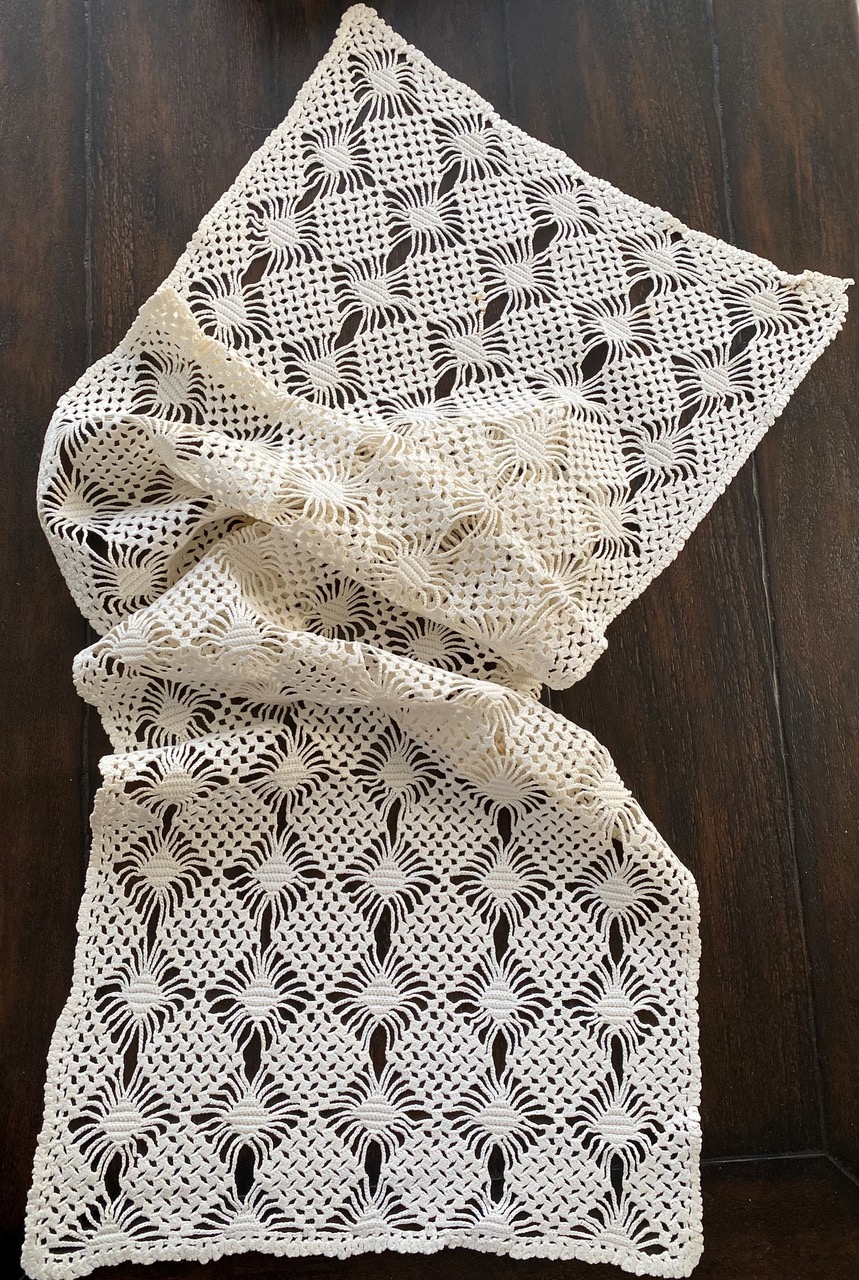
JUNCTURE NEWS
Juncture Announces a Brand New Workshop Series
“Taking Flight” is a four-part workshop series designed for writers of nonfiction, fiction, and poetry seeking new ways to think about character, scene, story, plot, pace, and language itself. Participants will enter a curated world of art, music, and landscape, take a behind-the-scenes look at Beth’s approach to fitting words with images and ideas, and write to a progression of elevated, guided prompts. Selected responses will be shared and considered within the Zoom classroom.
Details
Saturday, September 28, 2024 3:00 – 4:30 ET (People)
Saturday, October 5, 2024 3:00 – 4:30 ET (Landscapes)
Sunday, October 13, 2024 3:00 – 4:30 ET (Plot and Pace)
Saturday, October 19, 2024 3:00 – 4:30 ET (Big Ideas)
Registration opens in April on the Juncture site.
Juncture Announces the Planned Launch of an Illustrated Essay Collection
Juncture will launch Beth’s first-ever essay collection, You Are Not Vanished Here, later this year. The collection showcases short-burst work as well as longer meditative pieces, all organized into six cohering sections with titles like “The Kingdom of Awe,” “Far Away, and Near,” and “Edge Life.” Each section will be prefaced by Bill’s original art.
Please keep an eye out for the upcoming cover reveal and a mid-summer launch date.
More Juncture News
Beth has a few open spots for one-on-one manuscript consulting. More about that here.
Beth will be giving a workshop on behalf of CRAFT TALKS entitled “Does It Have to Be Memoir? Reimagining Your True Story” on April 3. More information here.
We hope you’ll consider buying one of Juncture’s memoir craft books such as Tell the Truth: Make It Matter, We Are the Words: The Master Memoir Class, and Consequential Truths: On Writing the Lived Life, each of which looks at very different aspects of truth making in very different ways. All Juncture memoir-making books are supported by a wide range of other writers’ works.
Bind News:
We continue to evolve here at Bind—adding new items to our Etsy shop, preparing our schedule of farmers market and guild shows (we will soon have some exciting news to share in that regard), and exploring new means (sewing machines! a modest paper-weaving tool!) to produce new kinds of art. We are always grateful for your interest.
words: Beth Kephart
images: Beth Kephart
LIVE THE WIDER REALM
At the University of Pennsylvania this semester I’m teaching two gifted and committed young women who are at work, in independent-study fashion, on what one might classify as poems, or prose fragments, or lyric suites, or tether-breaking narratives.
Or something more? Else?
Sometimes the work is rooted in everyday truth, and sometimes the truths are imagined, and often the work is magpie work, weaving many forms and genres. Beautifully intense, these young writers are requiring me to once again transcend myself—to move beyond what I know for sure, to test new theories and proclamations, and to read with more teacherly precision work I once read solely for my pleasure.
I’ve always loved the wild, wide mind of Carole Maso, for example, but not until now, having assigned one of the students Maso’s The Art Lover, have I had to figure out just how that book, with its memoir flicks and fiction dives, illustrative art and time warps, works. And Saskia Hamilton’s All Souls moved me deeply, but why, precisely? What can be learned from it? How might I teach the authenticity that rises from its raw, not perfectly seamed self? And I need to read Olga Tokarczuk’s Flights, the novel, as The New Yorker says, that “never settles down,” because one of my students is deeply inspired by it, and now I’m ordering Anna Hope’s Expectation, for the same reason, and there I stand in the kitchen cooking, listening to interviews with Anne Carson. And new to me because I think this might inspire one of them is Sofia Samatar/del Samatar’s Monster Portraits, and because I can imagine both young women wholly embracing Cynthia Marie Hoffman’s forthcoming intensity of memoiristic poetry Exploding Head, I have assigned it, I am reading it again, I am investigating its vivid parts. And why not pull out Suzanne Scanlon’s index Her 37th Year again, and can I really teach these two illuminated souls without leaning on Lars Horn?
Clearly, I am in over my head, but isn’t that what teaching is? Shouldn’t we always be just a little panicked? Shouldn’t teachers be the first to admit that we don’t quite know yet, that we are working things out, that we cling to the notion that we learn even more when we sit down to learn together?
“What are you hoping for from this course, from me?” I asked one of the students at the semester’s start.
“I want you to ask me the right questions,” she said.
Could there be, I thought, on my side of the Zoom screen, any larger responsibility than that?
Panic has accompanied the making of every course I’ve ever taught, every Juncture presentation, every guest workshop, including this brand-new Cleaver course, Writing Advanced by Categories: Obsessions into Stories, a masterclass scheduled for February 25. I’ve arranged and rearranged that slide set more than a dozen times now. I’ve rehearsed it and torn it apart. Just ask Bill, who does the digital rearranging for me.
At the same time, I’m taking a class of my own—Weave Through Winter, Helen Hiebert’s course on paper weaving. Every single day during this month of February, I’m working on her prompts, trying out new structures, and studying the posted work of the hundred other paper weavers. I’m new at this, I’m vulnerable, I’m trying, I’m making, I’m posting, too, the amateur among them. Not precisely panicked, but somewhere close to panic’s edge. And somewhere, absolutely, on the right side of joy.
And so my hope for you this winter: Take on something new. Pursue the thing you don’t know yet. Live the wider realm.
JUNCTURE NEWS
Upcoming Workshops:
February 25| Writing Advanced by Categories: Obsessions into Stories, Masterclass, Cleaver Magazine. Register here.
Beth has a few open spots for one-on-one manuscript consulting. More about that here.
Other workshops are in the works for 2024. In the meantime, we hope you’ll consider buying one of Juncture’s memoir craft books such as Tell the Truth: Make It Matter, We Are the Words: The Master Memoir Class, and Consequential Truths: On Writing the Lived Life, each of which looks at very different aspects of truth making in very different ways. All Juncture memoir-making books are supported by a wide range of other writers’ works.
News, Essays, Interviews:
Harold Underdown at Kane Press has acquired world rights to my The Many Lives of …, a four-book picture book series about the origins and uses of basic materials. The first book, The Many Lives of Paper, will be illustrated by Julia Breckenreid. Publication is scheduled for fall 2025.
“Beth Kephart Pens a Love Letter to Paper Through Her New Memoir,” PRINT Magazine, February 1, 2024 (an interview featuring several examples of my paper art)
“…a heartbreaking and highly original memoir, “Washington Independent Review of Books, February 1, 2024 (a narrative essay weaving My Life in Paper with the archives of Carolyn Forché)
“Extra (Extra) Virgin Olive Oil,” Orion Magazine, February 1, 2024
“I Took Instructions from My Hands,” Cleaver Magazine, January 17, 2023
Bind News:
There are new journals, cards, prints, and booklets in our BINDbyBIND Etsy shop. We invite you to take a look around. We hope you’ll consider buying one for yourself or a friend.
words: Beth Kephart
images: Beth Kephart
WRITE EVERY DAY
As if this were the cure, the one sure thing that springs each story from its mysterious interior habitat and assures its dominion on the page.
As if those of us (I raise my hand) who write in fury for an hour or day or weeks at a time and then push back, pause, leave the story in its nascent state are not somehow writers, too. As if those of us who do not write for months at a time (there goes my hand again) should take up another trade, or cause.
For many, of course, a daily writing practice is the cure, as inseparable from the reliable routine as brushing one’s teeth or taking a walk or setting the kettle to boil. Five-hundred words a day. One thousand. A chapter. Among our dearest writing friends, dailiness motors stories forward. It soothes. It yields. It works.
But is dailiness a mandate? Should we feel ashamed if we are not writing all the time? Should we worry about our authorial future? Our interior lives? Our general legacies?
Here, at the dawn of a new year, I would like to suggest that is okay—we are okay—if we cannot heed the call to write every single day.
Life, for one thing, might get in the way. Perhaps there is a child next door who comes to you with questions: Can she make paper with you? Will you teach her how to bind a book? Do you want to hear what she hopes Santa will bring? Wouldn’t it be funny if she danced like the Nutcracker, and do you want her to teach you how? Why not let the child’s curiosity become our own, her spark become our joy? Why not set the pen aside, leave the writing for another day? Why not decide, as the clock ticks on, that we did not lose by not writing that day. No. In fact, something ineffable was gained. Something that will someday excavate vocabulary, image, or metaphor we had not previously acknowledged (or deployed).
The work-in-progress, for another thing, might want or need some time to itself—time to sort its way through our subconscious, time to change its mind, time to find the missing thing with which it must ultimately braid, time to find the place where the story actually begins, time to make sense of what the writing teacher or the workshop colleague said. So much of our writing work is language-less. It is a feeling, a mood, a melody that emerges precisely because we have chosen not to force it. We have, instead, given it time to breathe—time away from our scribbling, our thesaurus thumbing, our boundless analyses and critiques. Our lines-across-the-forehead need.
Other people’s stories, to name yet another thing, might be placing a claim on our immediate attention or wistful imaginations—and for reasons we cannot even name. Yes, we really did have to read Saskia Hamilton’s poems today, and so went our writing time. Or maybe Andrew Leland’s The Country of the Blind galvanized us. Or Claire Keegan’s So Late in the Day. Something in us cracked open as we read, and we’d needed to be cracked and crackled in just that way before we could begin to write again.
The point is: We are not lesser writers if we do not write each day. Nor are we lesser if we decide to change course with a writing project that has heretofore consumed us—to turn the story into a poem, the poem into a memoir, the memoir into a burst of flash nonfiction, or the clamor of the work itself into the quiet of not writing. Every line we do write when we make our way back to writing will be broadened in incalculable ways by the child to whom we said yes, the poem that poet wrote, or the time we gave ourselves to look away from the words we had been writing so that we might appreciate the world that waits for us. The world that, with its hush and curl, its Nutcracker dance and beads of light, will send us back someday (we cannot know when) to the work, the joy, the necessity of finding the words with which we story forward.
JUNCTURE NEWS
Upcoming Workshop:
February 25| Writing Advanced by Categories: Obsessions into Stories, Masterclass, Cleaver Magazine. Register here.
Other workshops are in the works for 2024. In the meantime, we hope you’ll consider buying one of Juncture’s memoir craft books such as Tell the Truth: Make It Matter, We Are the Words: The Master Memoir Class, and Consequential Truths: On Writing the Lived Life, each of which looks at very different aspects of truth making in very different ways. All Juncture memoir-making books are supported by a wide range of other writers’ works.
News, Essays, Interviews:
My Life in Paper was featured on Helen Hiebert’s 100 Papery Picks 2023.
“Love in the Knots of the Coptic Stitch” was nominated for 2024 Best of the Net by The Gravity of the Thing.
“The History of Color” has been nominated for a Puschart Prize by Short Reads.
Beth’s prose poem “Squeeze” is featured in Story Seek, a “new virtual reality journey combining color, sound, and site-specific poetry, memoir, and fiction,” to quote the creators. Story Seek is a collaboration between Cleaver and the Drexel Entrepreneurial Game Studio, funded in part by the William Penn Foundation and the Philadelphia Cultural Fund.
Blank Pages, Bound Books, Beth’s essay about journal making, appeared in Writers Digest, December 22, 2023.
Beth’s conversation with Michelle Fost, about failure, redemption, hope, and My Life in Paper, appeared in Cleaver, December 18, 2023.
Beth is featured in What Women Create, an eight-page spread on grass paper, in the Winter 2023/2024 issue. Copies can be found online or at Barnes and Noble.
A dialogue with Jehanne Dubrow, appeared in Adroit Journal, December 12, 2023. Jehanne and I talked the way poets and prose writers do about the entanglements of language, structure, and form.
“The Lessness of Things,” an essay about wanting, well, less, appeared in Books by Women, December 2023.
Bind News:
There are new journals, cards, prints, and booklets in our BINDbyBIND Etsy shop. We invite you to take a look around. We hope you’ll consider buying one for yourself or a friend.




